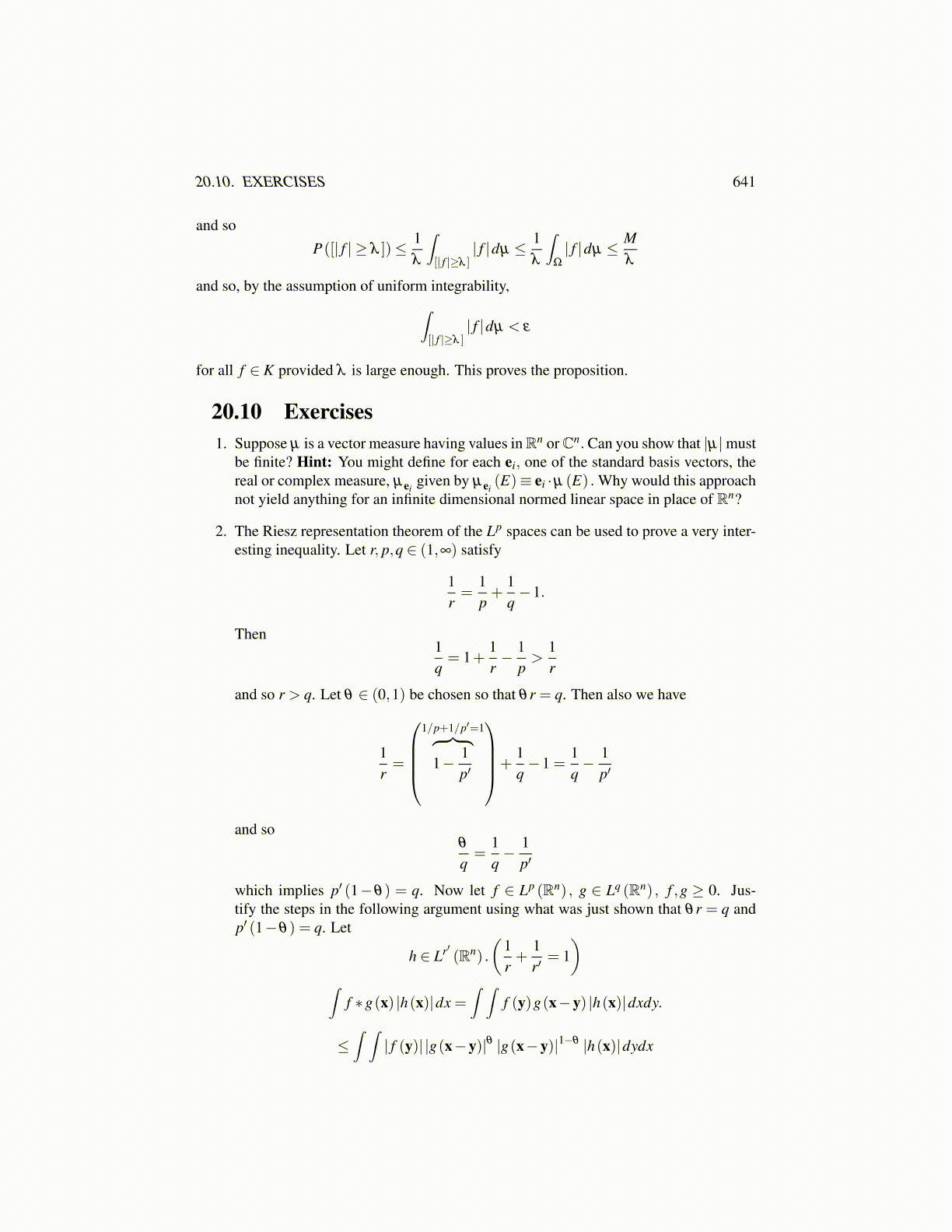
20.10. EXERCISES 641
and soP([| f | ≥ λ ])≤ 1
λ
∫[| f |≥λ ]
| f |dµ ≤ 1λ
∫Ω
| f |dµ ≤ Mλ
and so, by the assumption of uniform integrability,∫[| f |≥λ ]
| f |dµ < ε
for all f ∈ K provided λ is large enough. This proves the proposition.
20.10 Exercises1. Suppose µ is a vector measure having values inRn orCn. Can you show that |µ|must
be finite? Hint: You might define for each ei, one of the standard basis vectors, thereal or complex measure, µei
given by µei(E)≡ ei ·µ (E) . Why would this approach
not yield anything for an infinite dimensional normed linear space in place of Rn?
2. The Riesz representation theorem of the Lp spaces can be used to prove a very inter-esting inequality. Let r, p,q ∈ (1,∞) satisfy
1r=
1p+
1q−1.
Then1q= 1+
1r− 1
p>
1r
and so r > q. Let θ ∈ (0,1) be chosen so that θr = q. Then also we have
1r=
1/p+1/p′=1︷ ︸︸ ︷
1− 1p′
+1q−1 =
1q− 1
p′
and soθ
q=
1q− 1
p′
which implies p′ (1−θ) = q. Now let f ∈ Lp (Rn) , g ∈ Lq (Rn) , f ,g ≥ 0. Jus-tify the steps in the following argument using what was just shown that θr = q andp′ (1−θ) = q. Let
h ∈ Lr′ (Rn) .
(1r+
1r′
= 1)
∫f ∗g(x) |h(x)|dx =
∫ ∫f (y)g(x−y) |h(x)|dxdy.
≤∫ ∫
| f (y)| |g(x−y)|θ |g(x−y)|1−θ |h(x)|dydx